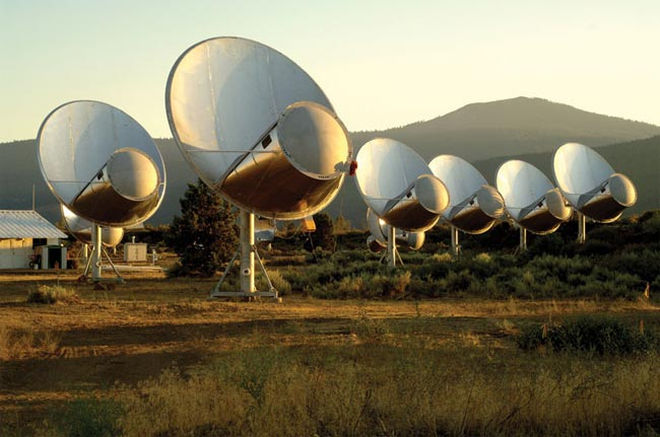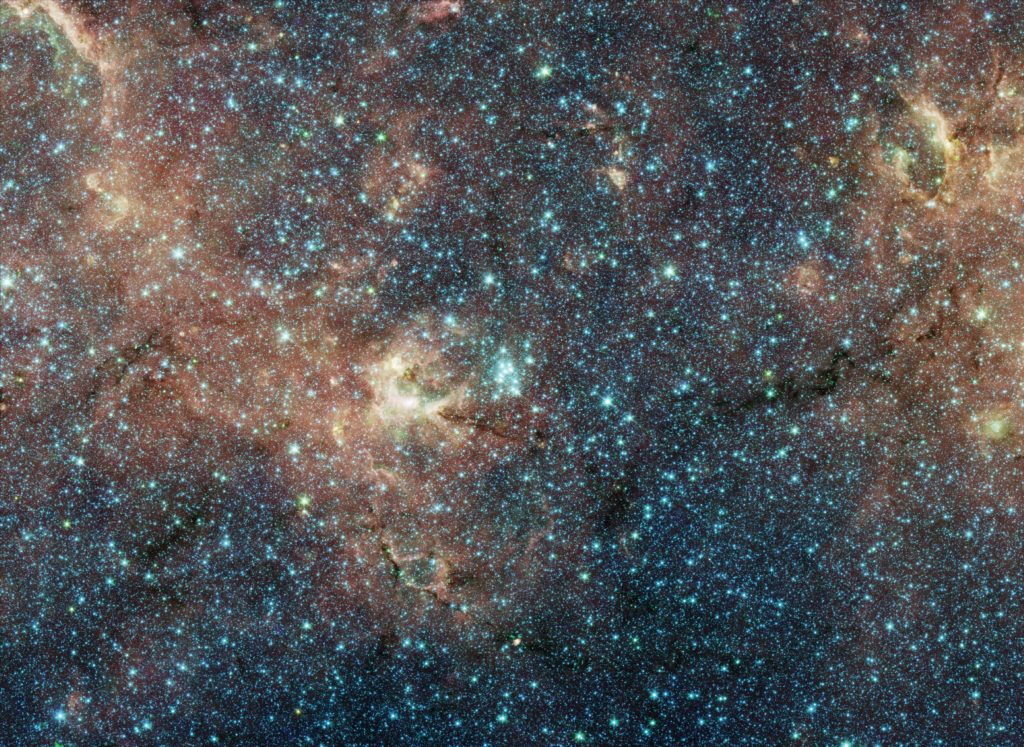-
SETI Reconceived and Broadened
August 12, 2016 / Written by: Marc Kaufman
SETI’s partially-built Allen Telescope Array in Northern California, the focus of the organization’s effort to collect signals from distant planets, and especially signals that just might have been created by intelligent beings. (SETI)For decades, the Search for Extraterrestrial Intelligence (SETI) and its SETI Institute home base have been synonymous with the search for intelligent, technologically advanced life beyond Earth. The pathway to some day finding that potentially sophisticated life has been radio astronomy and the parsing of any seemingly unnatural signals arriving from faraway star system — signals that just might be the product of intelligent extraterrestrial life.
It has been a lonely five decade search by now, with some tantalizing anomalies to decipher but no “eurekas.” After Congress defunded SETI in the early 1990s — a Nevada senator led the charge against spending taxpayer money to look for “little green men” — the program has also been chronically in need of, and looking for, private supporters and benefactors.
But to those who know it better, the SETI Institute in Mountain View, California has long been more than that well-known listening program. The Institute’s Carl Sagan Center for Research is home to scores of respected space, communication, and astrobiology scientists, and most have little or nothing to do with the specific message-analyzing arm of the organization.
And now, the new head of the Carl Sagan Center has proposed an ambitious effort to further redefine and reposition SETI and the Institute. In a recent paper in the Astrobiology Journal, Nathalie Cabrol has proposed a much broader approach to the search for extraterrestrial intelligence, incorporating disciplines including psychology, social sciences, communication theory and even neuroscience to the traditional astronomical approach.
“To find ET, we must open our minds beyond a deeply-rooted, Earth-centric perspective, expand our research methods and deploy new tools,” she wrote. “Never before has so much data been available in so many scientific disciplines to help us grasp the role of probabilistic events in the development of extraterrestrial intelligence.
“These data tell us that each world is a unique planetary experiment. Advanced intelligent life is likely plentiful in the universe, but may be very different from us, based on what we now know of the coevolution of life and environment.”

With billions upon billions of galaxies, stars and exoplanets out there, some wonder if the absence of a SETI signal means none are populated by intelligent being. Others say the search remains in its infancy, and needs new approaches. The galaxy as viewed by the Hubble Space Telescope. (NASA/STScI)She also wants to approach SETI with the highly interdisciplinary manner found in the burgeoning field of astrobiology — the search for signs of any kind of life beyond Earth. And in a nod to NASA’s Astrobiology Institute, which has funded most of her work, Cabrol went on to call for the establishment of a SETI Virtual Institute with participation from the global scientific community.
I had the opportunity recently to speak with Cabrol, who is a French-American astrobiologist with many years of research experience working with the NASA Mars rover program and with extremophile research as a senior SETI scientist. She sees the SETI search for technologically advanced life as very much connected with the broader goals of the astrobiology field, which are focused generally on signs of potential microbial extraterrestrial life. Yes, she said, SETI has thus far a distinctive and largely separate role in the overall astrobiology effort, but now she wants that role to be significantly updated and broadened.
Source: [Many Worlds]
- The NASA Astrobiology Institute Concludes Its 20-year Tenure
- Global Geomorphologic Map of Titan
- Molecular Cousins Discovered on Titan
- Interdisciplinary Consortia for Astrobiology Research (ICAR)
- The NASA Astrobiology Science Forum Talks Now on YouTube
- The NASA Astrobiology Science Forum: The Origin, Evolution, Distribution and Future of Astrobiology
- Alternative Earths
- Drilling for Rock-Powered Life
- Imagining a Living Universe
- Workshops Without Walls: Astrovirology